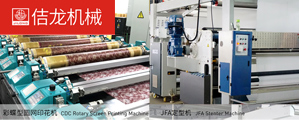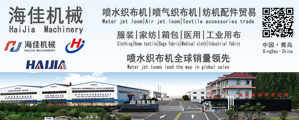Can fashion fix itself?
Nov 04, 2020 | by Zhao xh

The problems facing this industry have gone mainstream.
A quick survey across the September issues, typically fashion-focused editions pointing to the “in” silhouette or the hottest trends, quickly brought a different picture to light. The American Vogue cover was titled, “Hope, a Special Issue,” “100 voices on the future of fashion.” British Vogue’s lead story was, “What Will It Really Take to Fix Fashion?” Vanessa Friedman in the New York Times interviewed celebrity designers on “What’s next?” Every question and opinion was about tipping points, making the world a better place, the glut-of-stuff, and words like “redefine,” “reimagine,” “reinvent” and “relevance.”
It shows an industry in crisis.
September was a busy month for me as well. To re-create our annual Sourcing Summit as a virtual event this year, I logged more than 30 hours of prep calls with our 60-plus speakers. With so much at stake, we wanted to fine-tune discussions to maximize value and learning for our audience.
From the headlines to these conversations with those of you on the frontlines, two things became clear: fashion is in crisis and fashion may not be able to fix itself. It will require outside voices and new learnings to set priorities for growth and profitability. The cover story today is this: “What Got Us Here, Won’t Get Us There.”
Too often on these calls, I did not hear confidence. Fashion must become bold once again, to rediscover its swagger and escape being an industry of “same old, same old.” Our definition of creativity is too narrow. Creativity is not only for the design suite anymore, it must be spread across the entire organization. Innovation and experimentation are about more than product and materials and apps. Today, creativity must be found upstream, in the processes that deliver the goods. But lately, executives have been too afraid to take the risk. Instead, they’re beholden to The Street, chasing quick gains, or VC firms looking for online metrics.
The lack of confidence also stems from a “who can you trust?” mentality borne out of an extremely fragmented industry. The pandemic has only further ruptured this ecosystem, and trust between vendors and suppliers is now more frayed than ever. The industry is adversarial, and the term ‘partnership’ rings more hollow than ever. To restore confidence, we must elevate collaboration and unity as our top priority. New faces, new voices and new approaches to creativity will lead us to a truly different and better business. This will not be easy.
The challenge is made even more difficult because the timeline for reinvention has also been revised. Our evolution cannot be incremental when the pace of change waits for no one. Five-year plans that are now four or three are not enough. Further, were these plans created for yesterday’s battle or tomorrow’s? The last war or the next one? A completely retooled approach to how we run our companies must happen—and happen now. COVID-19 will be blamed for many problems, but we must not forget that this industry has been suffering for years.
We need to look for the green shoots, the new seeds of opportunity. They need to be planted now, in crisis, and they are our hope. Toyota, Zara, Apple and Tesla were all green shoots that began or pivoted in crisis. It is now fashion’s turn to go green, to go digital and to accelerate the future we all want and need.
Here are our headlines and buzzwords today: US-China trade wars, Xinjiang cotton, sustainability, traceability, inventory optimization, trade finance, demand planning, material innovation, social responsibility, fulfillment…each of these supply-chain issues have upside potential. The old formulas of more doors, store comps and more inventory just don’t work anymore.
Here’s what I’m seeing instead. · Nike, PVH and Todd Snyder re-evaluated their wholesale relationships with traditional department stores
· H&M offers their best-in-class sustainability factory base for precompetitive collaboration in Treadler.
· Crocs is early adopter of digital product development.
· Lululemon—acquiring Mirror—stayed true to its core customer and vision. Expanding the scope of its offering but not sacrificing its DNA and authenticity.
· Foot Locker invests in Carbon38 and GOAT.
Simply generating more demand will not solve fashion’s problems. Another runway show, influencer campaign, special drop or glossy ad won’t foster systemic change. Our businesses, to be relevant, must unlock working capital and find efficiencies in all aspects of the process, beyond just design and sales.
According to McKinsey, the 10 top retailers in the world account for 90 percent of the industry profit. This problem is not going away soon.
The new breed of consumer already shops their values, and not status, flash and indulgence. Those who are constrained financially are now selective in how and where they shop. Certain categories are selling, but not everyone can become a fleece or yoga pant manufacturer, get into the PPE business, out-ship Amazon or out-price Walmart.
For one of the largest industries in the world, the pie is not growing. The urgent questions are: What do you stand for? Why are you essential? People need value and beauty and a better world. Is that how you define your brand?
Ray Dalio, founder of Bridgewater, the world’s largest hedge fund, sees three to seven years of recovery ahead. He says we are in the “era of lost growth.” In this reality, how does fashion find its footing? How does fashion remain relevant and sustainable? Unfortunately, the analysts tell us that inventory is not coming down fast enough, that promotions are still too prominent, sourcing risks too high and online investment too slow.
What are the new metrics of success? First, it is collaboration and unity as an industry-wide culture. Second, it is community with our consumers to contribute to a better world through sustainable fashion. Third, an accelerated commitment to change. And, fourth, it is confidence that fashion can fix itself—with new learnings from outsiders, but brought to life as only insiders know how.
Ralph Lauren recently said, “Living right now, the world is not frivolous. So, fashion must find a way to be more meaningful, more purposeful, to add comfort and beauty to our lives.”
Can fashion fix itself? The answer is: it must. There’s too much to fight for.
Source: sourcingjournal.com








